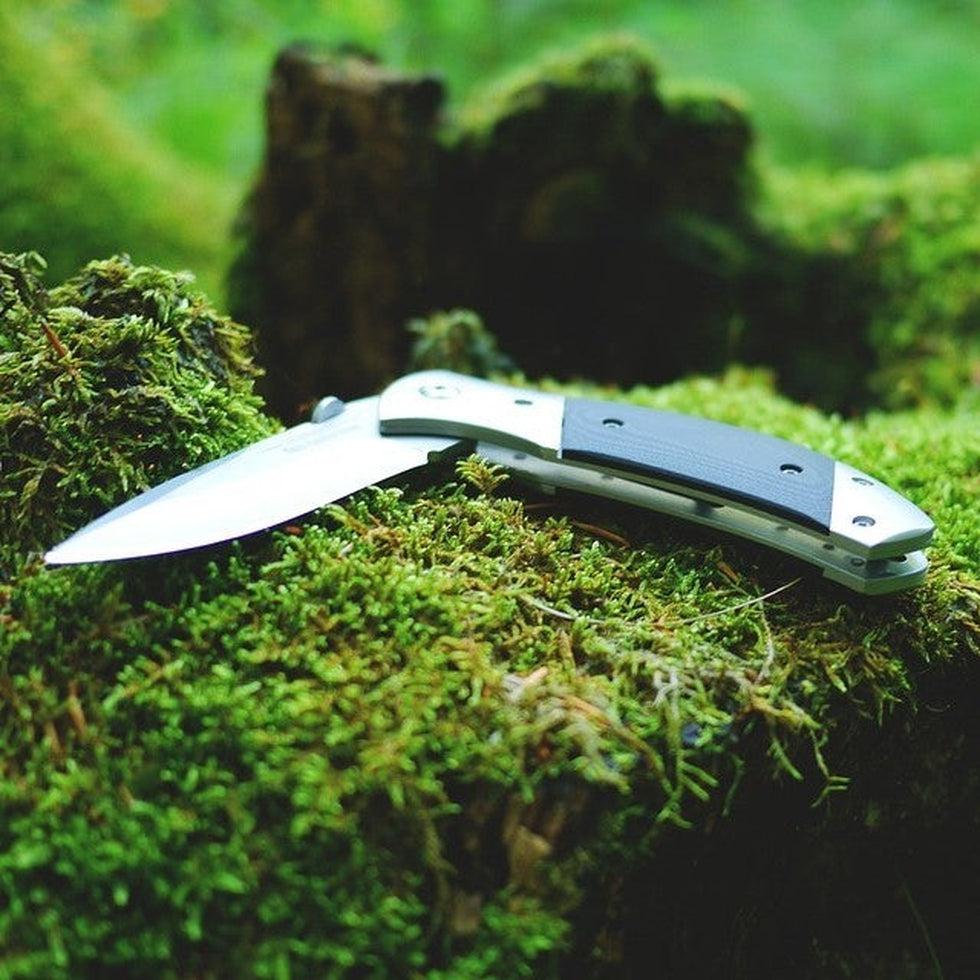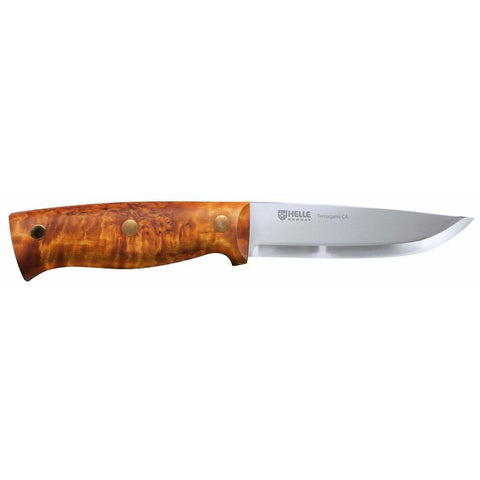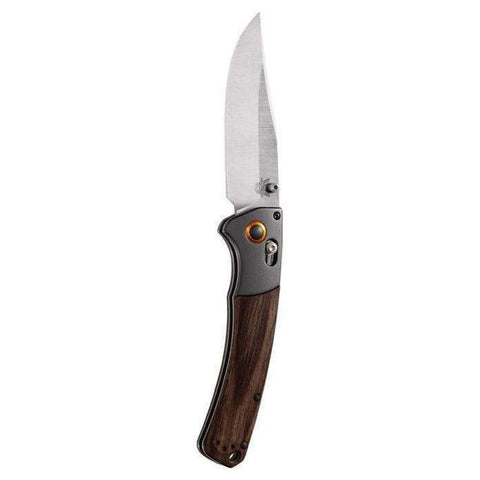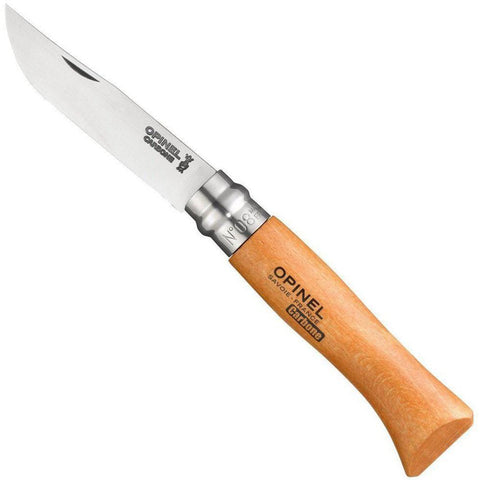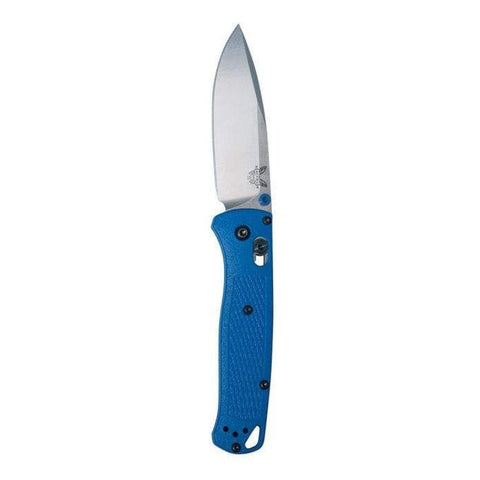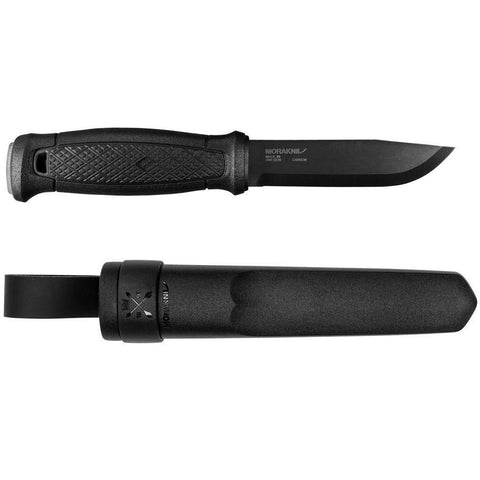Bushcrafting, the art of living and thriving in the wilderness, requires a specific set of skills and tools. One of the most crucial tools for any bushcrafter is a knife. It is essential to find the right knife to ensure safety, efficiency, and effectiveness in the wild. Throughout this blog post, we will explore the various knife constructions and their pros and cons to help you select the correct knife for bushcrafting.

Fixed-Blade Knives
Fixed-blade knives are the most common type of knife for bushcrafting. They are durable, reliable, and easy to maintain. These knives have a full tang, which means the blade and handle are made from a single piece of metal, providing strength and stability. The blade length can vary, but the most popular sizes for bushcrafting are between 3-5 inches.
Pros:
- Strong and durable: these knives are sturdy and reliable, which makes them perfect for heavy-duty tasks such as chopping wood, carving, and skinning.
- Easy to maintain: as there are no moving parts, fixed-blade knives are easy to clean and maintain, requiring minimal maintenance.
- Multi-purpose: these knives can be used for a variety of tasks, making them versatile.
Cons:
- Bulky: fixed-blade knives are larger and heavier than folding knives, making them less convenient to carry.
- Requires a sheath: these knives require a sheath for safe storage and transportation, which can be an additional cost.
|
Benchmade 162 Bushcrafter |
Morakniv Kansbol Knife |
Helle Temagami Carbon |
|---|---|---|
|
|
|
|
| View Product | View Product | View Product |
Folding Knives
Folding knives are a popular choice for bushcrafting as they are compact and easy to carry. They consist of a blade that folds into the handle, making them convenient to store and transport. Folding knives come in a variety of sizes, but the most popular size for bushcrafting is between 3-4 inches.
Pros:
- Compact: folding knives are small and lightweight, making them easy to carry in a pocket or on a belt.
- Easy to deploy: they can be quickly opened with one hand, making them useful in emergencies.
- Less expensive: folding knives are generally less expensive than fixed-blade knives, making them an affordable option for beginners.
Cons:
- Less durable: Folding knives have moving parts that can wear out or break, making them less durable than fixed-blade knives.
- Limited blade size: Folding knives have a shorter blade length than fixed-blade knives, making them less suitable for heavy-duty tasks.
|
Benchmade 15080-2 Crooked River |
Opinel No.8 Carbon Steel Folding Knife |
Benchmade 535 Bugout |
|---|---|---|
|
|
|
|
| View Product | View Product | View Product |
Full Tang Knives
Full tang knives are a type of fixed-blade knife where the blade extends the entire length of the handle, providing strength and stability. These knives are incredibly durable and reliable, making them ideal for heavy-duty tasks.
Pros:
- Strong and durable: full tang knives are incredibly sturdy and reliable, making them perfect for heavy-duty tasks such as chopping wood and carving.
- Balanced: these knives have a balanced weight distribution, making them comfortable to use for extended periods.
- Multi-purpose: full tang knives can be used for a variety of tasks, making them versatile.
Cons:
- Bulky: full-tang knives are larger and heavier than folding knives, making them less convenient to carry.
- Requires a sheath: these knives require a sheath for safe storage and transportation, which can be an additional cost.
|
Casstrom No. 10 Swedish Forest Knife |
Morakniv Garberg Knife Carbon |
Casstrom Lars Falt Bushcraft Knife |
|---|---|---|
|
|
|
|
| View Product | View Product | View Product |
Partial Tang Knives
Partial tang knives are a type of fixed-blade knife where the blade does not extend the entire length of the handle. These knives are less sturdy than full tang knives but are still suitable for light to medium-duty tasks.
Pros:
- Lightweight: partial tang knives are lightweight, making them easy to carry.
- More affordable: these knives are generally less expensive than full tang knives.
- Versatile: partial tang knives can be used for a variety of light to medium-duty tasks.
Cons:
- Less sturdy: partial tang knives are less durable and less suitable for heavy-duty tasks.
- Imbalanced: partial tang knives have an imbalanced weight distribution, which can cause discomfort during extended use.
|
Morakniv Companion HD MG |
Morakniv Companion Spark |
Morakniv Bushcraft Black |
|---|---|---|
|
|
|
|
| View Product | View Product | View Product |
Choosing the Right Blade Material
The blade material is an essential factor to consider when selecting a bushcrafting knife. The three most common materials used for bushcrafting knives are carbon steel, stainless steel, and high-carbon stainless steel.
Carbon steel is a popular material for bushcrafting knives because of its hardness, toughness, and ability to hold a sharp edge. However, carbon steel is prone to rust and requires regular maintenance.
Stainless steel is a popular material for bushcrafting knives because of its resistance to rust and corrosion. However, stainless steel is softer than carbon steel and does not hold an edge as well.
High-carbon stainless steel is a combination of carbon steel and stainless steel, providing the benefits of both materials. High-carbon stainless steel is durable, holds a sharp edge, and is resistant to rust and corrosion.
Other factors to consider when selecting a bushcrafting knife include the handle material, blade shape, and grind. The handle material should be comfortable to grip and provide a secure grip, even when wet. The blade shape and grind should be suitable for the intended use, whether it be chopping, carving, or skinning.

So, when selecting the correct knife for bushcrafting, consider the various factors, including knife construction, blade material, handle material, blade shape, and grind. Fixed blade knives, folding knives, full tang knives, and partial tang knives are all suitable options for bushcrafting, each with its own pros and cons. Ultimately, the right knife for bushcrafting should feel comfortable and secure in your hand and is suitable for the tasks you intend to perform in the wilderness.

